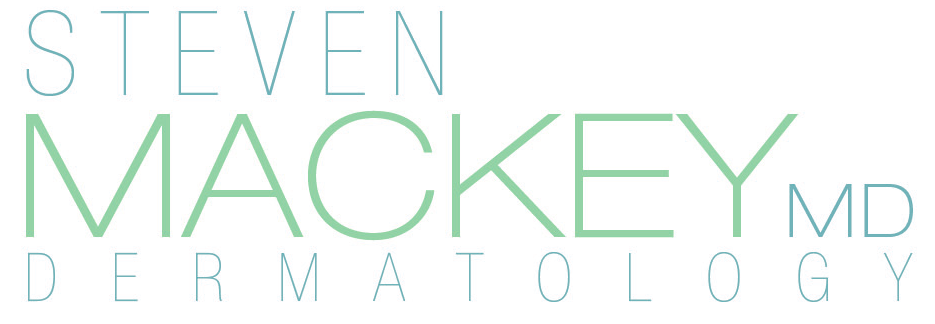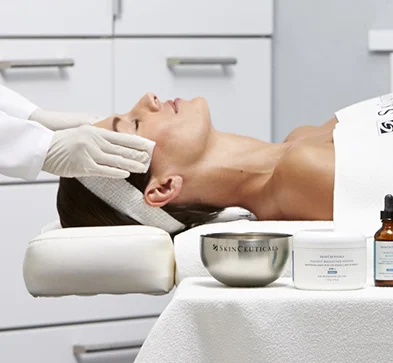Get Ready for the Holidays!
CHEMICAL PEEL SPECIAL
Look your best and be ready for any holiday occasion. Our November special will make you “Red Carpet” ready. Get a chemical peel for only $50 through November 30th. Give this gift to yourself now.
Take a look at this article and learn all the benefits of an professional chemical peel.
CHEMICAL PEELS
TARGETED TREATMENTS TO REVEAL SMOOTHER, HEALTHIER SKIN
Office-based chemical peels are essential for maintaining and restoring skin’s health and appearance. Performed by a skincare professional, these exfoliating treatments help resurface the uppermost layer of the skin to reveal new, healthy skin underneath. Chemical peels are available in a variety of formulations and concentrations to target various skin concerns including fine lines and wrinkles, blemishes, enlarged pores, and uneven skin tone.
FAQs
What are chemical peels?
Administered by skincare professionals, chemical peels work by exfoliating the skin’s surface to reduce the appearance of blemishes, smooth skin texture, improve radiance, and restore skin health. These effective treatments can be performed on the face, neck, chest, hands, arms, or legs. They are most effective at enhancing cell turnover and improving the appearance on the surface of the skin.
During the treatment, your skincare professional will apply one or more layers of a chemical peel solution onto skin for a specified amount of time. This is dependent on the type of chemical peel used, the concentration of the solution, skin type, and skin’s reactivity to the treatment. While some peels are self-neutralizing, most formulas need to be neutralized with a buffering solution or water upon completion of the treatment. The goal is to create a controlled, safe injury to the skin, thereby prompting skin to naturally repair itself and reveal newer, brighter skin.
It is important that chemical peels are performed by a licensed skincare professional with access to high-performing peel solutions that are clinically proven to deliver results. Your skincare professional may also recommend advanced homecare products to precondition skin or extend results.
Who are chemical peels for?
The depth and type of chemical peel used by a skincare professional depends on the condition of the skin, the skin’s Fitzpatrick type (skin color and likelihood to burn), and the skincare habits of the client. In general, the higher the Fitzpatrick skin type, the more caution should be exercised to avoid triggering a pigment response. For extremely sensitive skin and skin experiencing barrier dysfunction (exzema, psiorisis, etc), chemical peels are generally not recommended.
Consult with your skincare professional to better understand the most appropriate type of chemical peel for your specific skin type.
What type of chemical peel is right for me?
Chemical peels are categorized by how deeply they penetrate the skin: superficial, medium, or deep. Superficial peels penetrate only the uppermost layer of the epidermis. They are often performed in a series to treat fine lines and wrinkles around the eyes and mouth. A medium-depth peel is more effective for patients with moderate skin damage, including age spots, freckles, and actinic keratoses. It is often coupled with laser treatments to maximize effectiveness. Deep chemical peels are quite aggressive and affect the skin down to the reticular layer of the dermis. Traditionally performed with phenol, deep chemical peels are not very common today, as newer laser technology can deliver greater results with more control and less post-procedure discomfort.
The physical solutions used in these chemical peel treatments fall into two general categories: water-soluble acids including alpha hydroxy acids (AHAs) and trichloroacetic acid (TCAs), and oil-soluble acids such beta-hydroxy acids (BHAs). Some acids are both water and oil soluble, such as mandelic acid and resorcinol. In general, AHAs have a less drying effect than BHAs on the skin. Resorcinol, first popularized in the Jessner peel (a blend of salicylic, lactic and resorcinol) can break down rough, scaly and hardened skin, making it a popular addition to medium and deep peels.
The type and depth of chemical peel administered will depend on your skin type, concern, Fitzpatrick type, and skincare habits. Consult with your skincare professional to create a customized treatment plan for your specific skin needs and to understand how to maintain results with advanced homecare.
How do chemical peels work?
Chemical peels improve the texture and appearance of the skin by sloughing off the outer layers of the skin. They are effective facial treatments for improving blemishes, fine lines, wrinkles, and skin tone. During the treatment, a pre-determined quantity of the peel solution is applied to the face, neck, chest, hands, arms, or legs. This solution works by reacting with the upper layer of the skin to efficiently dissolve the bonds that bind surface cells to the skin, ultimately revealing smoother, healthier skin underneath. The follicular action of a chemical far outweighs the effect of an exfoliating scrub or brush. Best of all, chemical peels are appropriate for nearly everyone. It is a matter of knowing which chemical is best for your skin type and concerns.
Chemical acids are further broken down by the pH of the formulation (the lower the pH, the stronger the acid) and the size of the molecule itself. For example, a 20% concentration of glycolic acid at a pH of 3 will be stronger than the same formulation of lactic acid because the glycolic molecule is much smaller and better able to penetrate the skin’s barrier.
Your skincare professional will be able to determine the most appropriate peel formulation for your skin type and the most effective post-procedure regimen.
What will I experience during a chemical peel?
Even a superficial chemical will produce a tingling sensation on the skin. However, this mild discomfort will typically subside once the peel solution has been neutralized. Deeper peels can feel quite active and may require the application of a numbing cream beforehand. In general, skin accustomed to the use of acids will tolerate stronger formulations.
A superficial peel can produce some redness, similar to a mild sunburn, which may last 3 to 5 days. The more intense medium and deep peels will result in noticeable redness, swelling, blistering (in the case of deep peels), and/or peeling for 7 to 14 days. Deep chemical peels may also require bandages to be applied for a few days following treatment, along with prescribed painkillers to manage the discomfort.
Immediately after a chemical peel, skin becomes more photosensitive. It is absolutely necessary that a broad spectrum sunscreen is applied daily post treatment, and that sun exposure is avoided or kept to a minimum.
When should I get a chemical peel?
When and how frequently a chemical peel is administered will vary according to the depth and concentration of the peel. Superficial peels can become part of an ongoing monthly skin maintenance program. Medium depth peels are generally done in a series of 3-6, while a deep peel may only be done once or twice a year. Any peel series should be done under the guidance of an experienced medical aesthetician or dermatologist.
Due to the exfoliating nature of chemical peels, skin may become more susceptible to damage from environmental aggressors immediately post treatment. It is essential that a broad spectrum sunscreen is applied daily and diligently. Your skincare professional might also recommend an at-home skincare regimen to help maintain the results of your chemical peel.
During times of increased UV exposure or activity, deep chemical peels or a series of medium depth peels should be avoided, as they will yield high sun-sensitivity in skin. Superficial chemical peels or lighter exfoliating agents are preferred.
Where should I get a chemical peel?
Although commonplace, chemical peels are strong and can have the potential for negative and unanticipated results. This may include scarring, swelling, infection, or discoloration. A consultation with a trusted aesthetician or cosmetic doctor is the best way to introduce chemical peels into your skin maintenance regimen. Your skincare professional will work with you to determine a chemical peel treatment plan customized to your skin needs, and may recommend a pre and post-treatment regimen to help prime and protect skin.
Should I incorporate an at-home skincare regimen?
It is recommended to incorporate an at-home skincare regimen after chemical peels; always consult with your physician for individual at-home advice.

